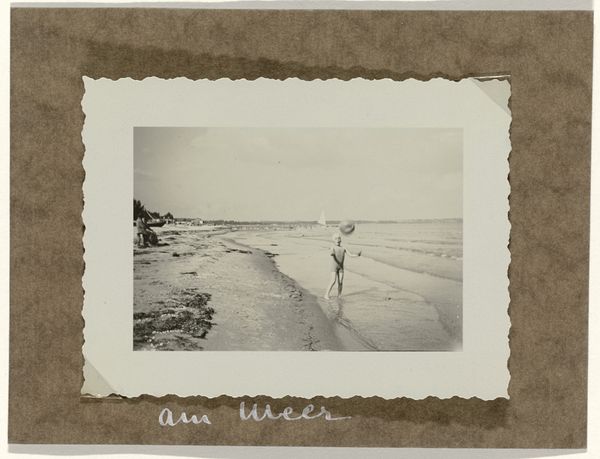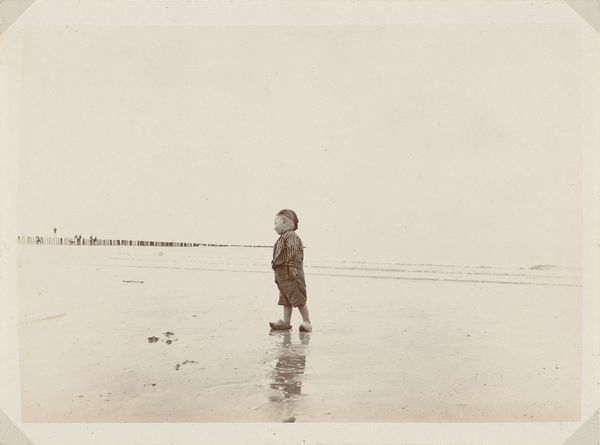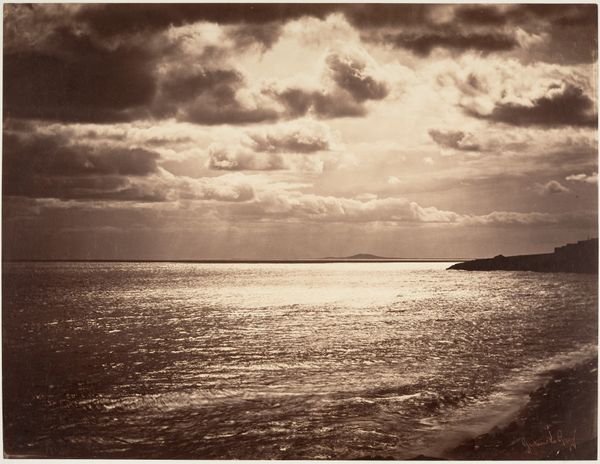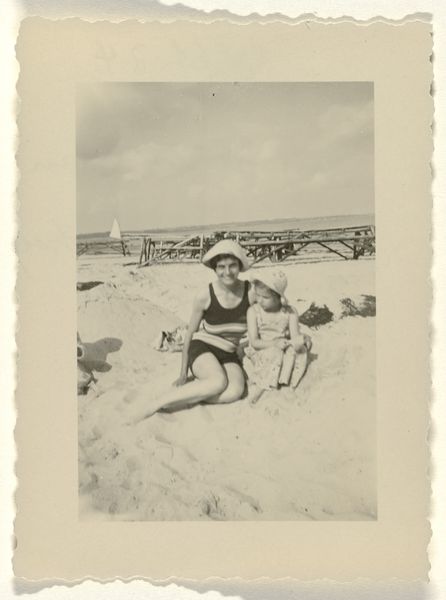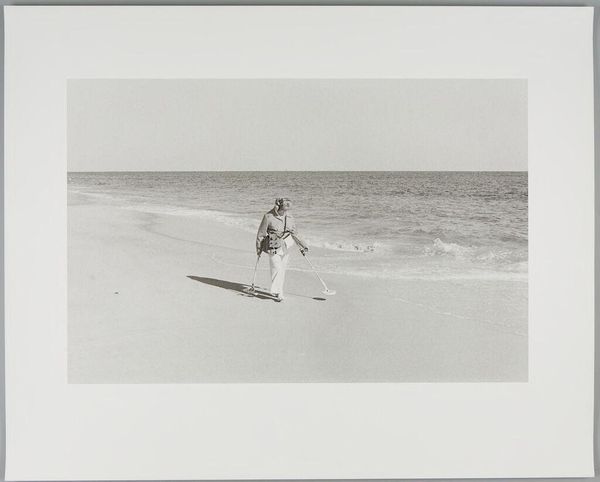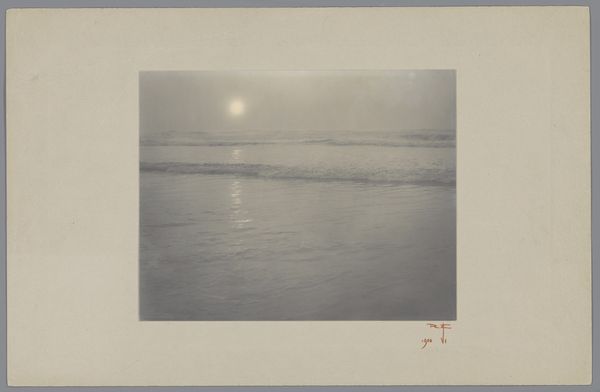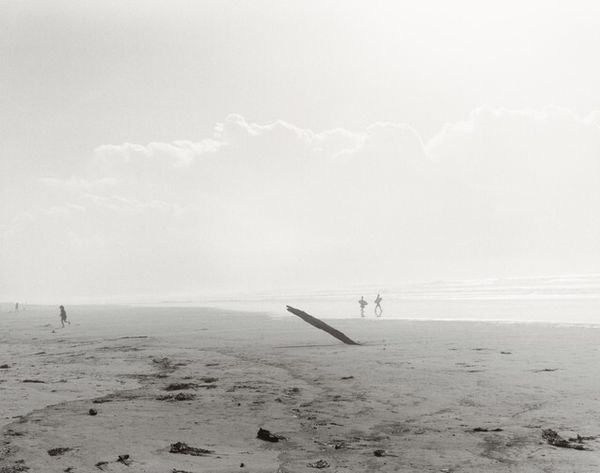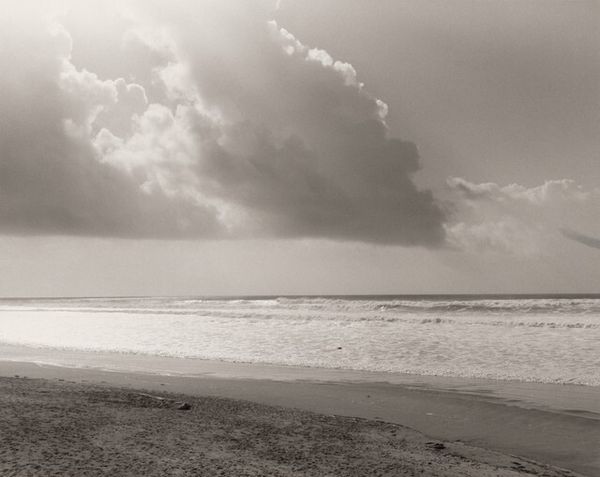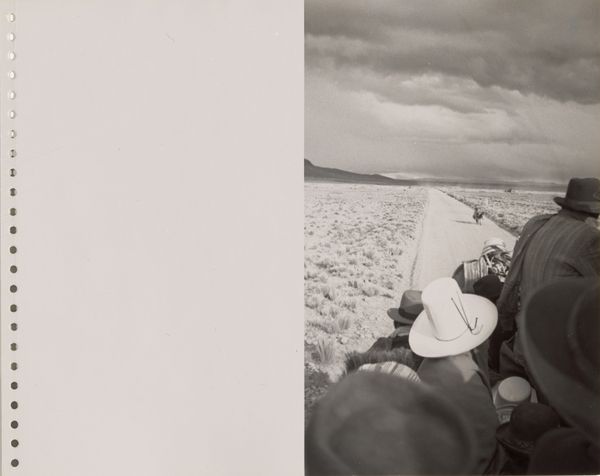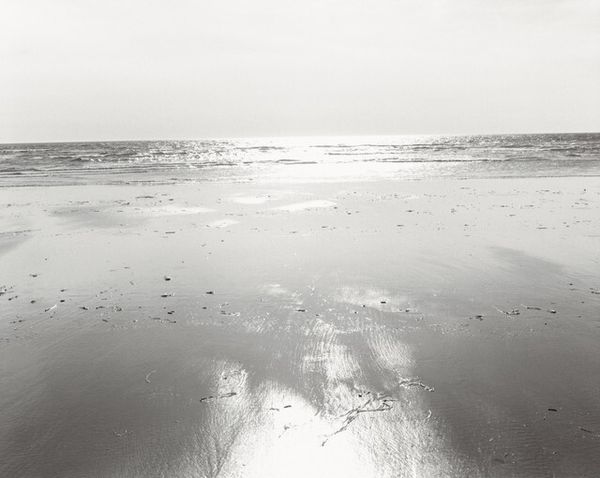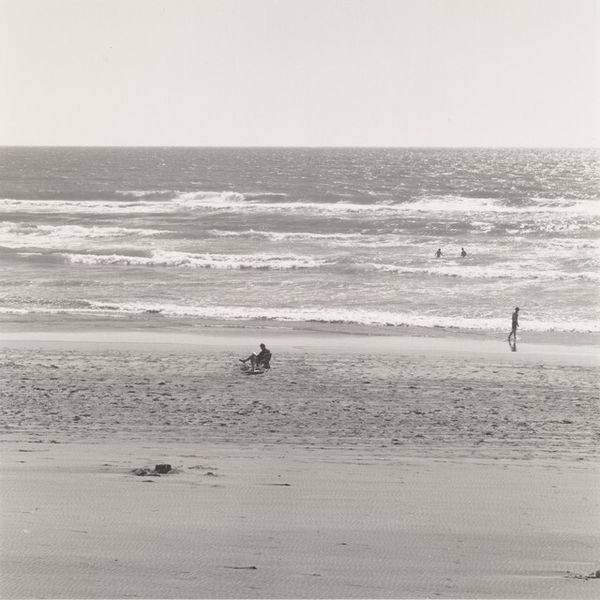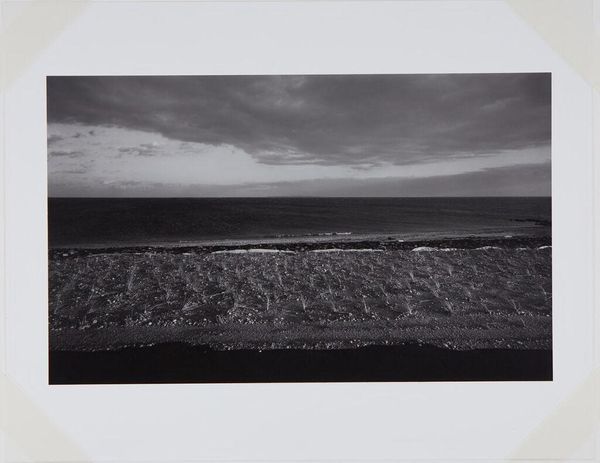
photography, gelatin-silver-print
#
portrait
#
landscape
#
photography
#
gelatin-silver-print
#
genre-painting
#
realism
Dimensions: height 80 mm, width 100 mm
Copyright: Rijks Museum: Open Domain
Editor: This gelatin silver print, "Isabel Wachenheimer op strand van Scharbeutz, september 1934," likely taken between 1934 and 1939, has such a nostalgic feel. The rippled texture of the print itself and the mundane subject create such intimacy. How do you read this piece? Curator: Well, focusing on the material conditions, the gelatin silver print wasn't just about capturing an image, but mass production. Photography offered ways of capturing an event for the bourgeois class. A day at the beach for the family, an innocent scene perhaps, becomes codified. Editor: So, the medium itself enabled the creation of a specific type of memory and a specific class ideology? Curator: Precisely. Consider the social context of 1930s Germany. Beach culture was thriving, but who had access? The leisure it depicts masks underlying tensions, class divisions, and the rise of mass culture. Even the seemingly mundane act of taking a photo becomes a political act, marking territories and recording who is where. How do you think the labor aspect fits here? Editor: The labor? Perhaps the unseen labor of manufacturing the film and printing the image? And even the more visible labour of someone photographing, which could have been domestic… the father capturing an image for later sharing as mementoes. Curator: Exactly! And that amateur quality speaks to the democratization of image-making and, by extension, memory-making within this social structure. So much to unpack. Editor: I see the print now as something manufactured at multiple levels: its chemicals, photographic process, beach experiences, all of which become evidence and archive of power! Thank you. Curator: Indeed. Analyzing the materials and their contexts reframes our understanding, questioning whose stories get told and how.
Comments
No comments
Be the first to comment and join the conversation on the ultimate creative platform.
